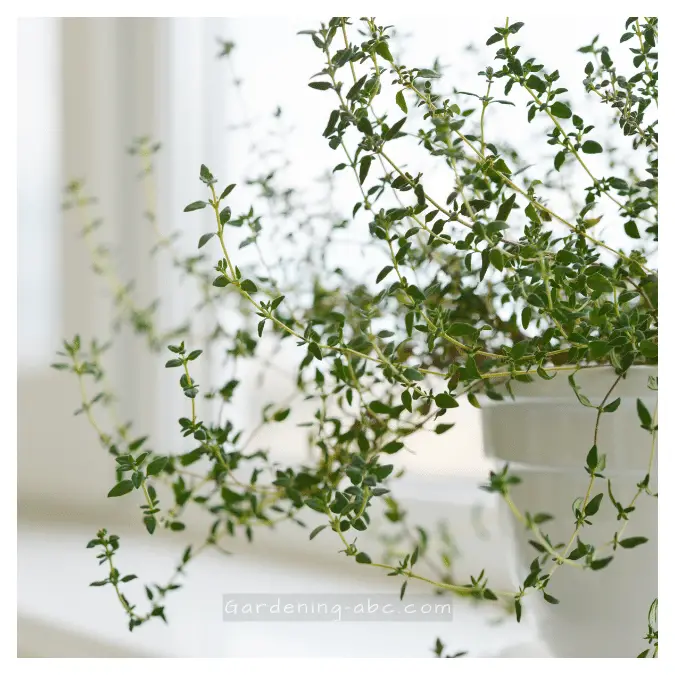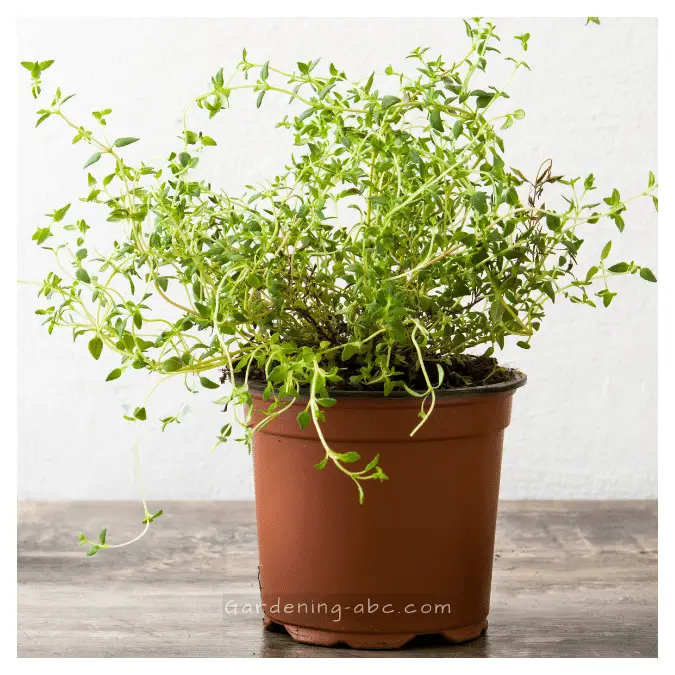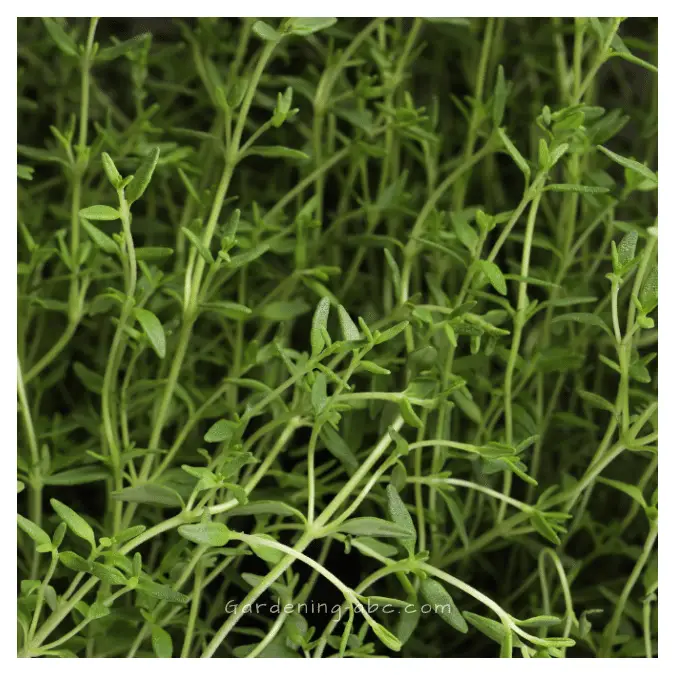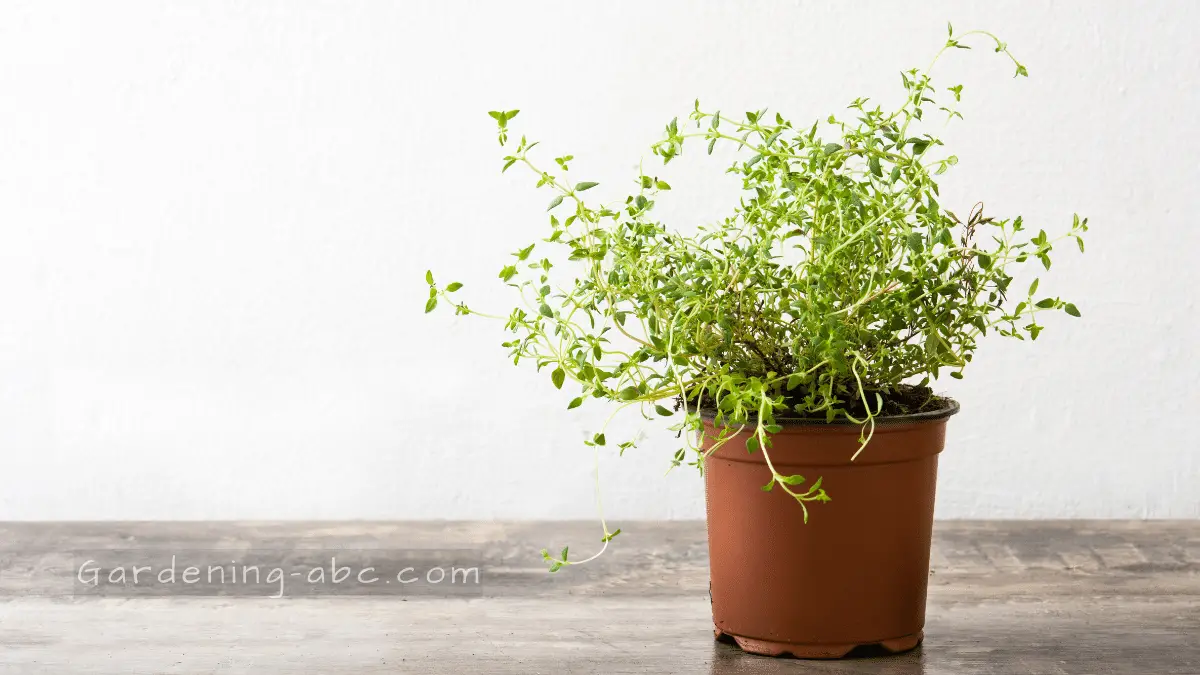We use affiliate links to run our site. When you buy through links on our site, we may earn an affiliate commission, without any added cost to you. Learn more
Are you a culinary enthusiast or a gardening aficionado looking to add a versatile herb to your home garden? Then thyme is the perfect plant for you to grow at home.
Known for its delightful aroma, beautiful foliage, and various culinary uses, thyme is an excellent herb to grow right in the comfort of your own home.
Whether you have a spacious backyard or a tiny balcony, this comprehensive guide will provide you with all the necessary information and tips to successfully cultivate thyme at home.
Table of Contents
Why Grow Thyme?
Thyme (Thymus vulgaris) is a perennial herb that belongs to the mint family, Lamiaceae. It is native to the Mediterranean region and has been used for centuries in cooking, medicine, and even as an ornamental plant. Here are some compelling reasons why you should consider growing thyme:
- Culinary Delights: Thyme is a staple herb in many kitchens, known for its distinct earthy flavor and fragrance. It pairs well with a wide range of dishes, including meats, vegetables, soups, and sauces. By having fresh thyme readily available, you can elevate the taste and aroma of your culinary creations.
- Health Benefits: Thyme is not only a flavorful addition to your meals but also a medicinal herb. It contains several essential nutrients and antioxidants that offer various health benefits. Thyme is known for its antibacterial and antifungal properties, as well as its potential to boost the immune system and aid digestion.
- Aesthetically Pleasing: With its small, aromatic leaves and delicate flowers, thyme is an attractive addition to any garden. It can be grown in containers, hanging baskets, or as part of a herb garden. Thyme’s foliage provides a beautiful contrast to other plants, and its flowers attract pollinators like bees and butterflies.
Thyme Growing Essentials [In A Nutshell]
| Botanical Name | Thymus vulgaris |
| Common Names | Thyme, Common Thyme, Garden Thyme, English Thyme |
| Family | Lamiaceae |
| Plant Type | Herbaceous, perennial |
| Mature Size | 6-12 in. tall, 6-12 in. wide |
| Sun Exposure | Full sunlight (6-8 hours of bright light daily) |
| Soil Type | Loamy, sandy |
| Soil pH | Acidic, neutral, alkaline |
| Bloom Time | Spring, Summer |
| Flower Color | Pink, Purple, White |
| Hardiness Zones | 5–9 (USDA) |
| Native Area | Mediterranean |
| Watering | Water occasionally, allowing the soil to dry completely between waterings |
| Fertilizing | Feed with a diluted all-purpose, balanced fertilizer in spring |
| Light Requirements | Full sunlight (6-8 hours daily) |
| Temperature and Humidity | Thyme can tolerate various temperatures and humidity levels, but good air circulation is important to prevent fungal diseases |
| Harvesting | Harvest stems just before flowering; avoid harvesting more than one-third of the plant at a time; fresh thyme can be stored in the refrigerator for up to two weeks |
| Propagation | Stem cuttings can be rooted in late spring; propagate from established plants |
| Common Varieties | – Golden lemon thyme (Thymus x citriodorus ‘Aureus’)- Woolly thyme (Thymus pseudolanuginosus)- Caraway thyme (Thymus herba-barona)- Creeping thyme (Thymus praecox) |
| Common Issues | – Root rot due to overwatering- Yellowing leaves due to excess nitrogen- Drying out and decline after 5-6 years |
How to Grow Thyme At Home:
Now that we understand the many benefits of growing thyme, let’s delve into the essential steps to cultivate this versatile herb at home.

Step 1: Choosing the Right Variety
There are numerous thyme varieties available, each with its unique characteristics and flavor profiles. Some popular thyme cultivars include:
- Common Thyme (Thymus vulgaris): This variety is the most commonly grown and has a robust flavor that pairs well with a variety of dishes.
- Lemon Thyme (Thymus x citriodorus): As the name suggests, this variety has a subtle lemony scent, making it an excellent addition to fish, poultry, and citrus-based recipes.
- Variegated Thyme (Thymus vulgaris ‘Argenteus’): This eye-catching variety features variegated leaves with silver-gray and green hues, adding visual interest to your garden.
When choosing thyme, consider your culinary preferences and the growing conditions in your area. Most thyme varieties thrive in well-draining soil and require ample sunlight to flourish.
Step 2: Providing Optimal Growing Conditions
Thyme is a hardy herb that thrives in a range of conditions, making it relatively easy to grow. However, providing the right growing conditions will ensure the health and vigor of your thyme plants. Here’s what you need to consider:
- Sunlight: Thyme requires at least six hours of direct sunlight daily. Choose a sunny location or a spot with partial shade if you live in an area with scorching summers.
- Soil: Thyme prefers well-draining soil with a slightly alkaline pH. Sandy or loamy soil works best, ensuring that excess moisture doesn’t accumulate around the plant’s roots. If your soil is heavy or clay-like, consider adding organic matter or sand to improve drainage.
- Watering: Thyme is drought-tolerant once established and prefers slightly dry conditions. Avoid overwatering, as it can lead to root rot. Water your thyme plants deeply but infrequently, allowing the soil to dry out between watering sessions.
- Temperature and Humidity: Thyme is adapted to warm, Mediterranean climates. It thrives in temperatures between 60°F and 75°F (15°C to 24°C) and prefers moderate humidity levels.
Step 3: Planting Thyme

Now that you have chosen your preferred thyme variety and prepared the growing conditions, it’s time to plant your thyme. Follow these steps to ensure a successful planting process:
- Seed Starting vs. Transplants: Thyme can be grown from seeds, but it’s often more convenient to start with transplants. Purchase healthy thyme seedlings from a local nursery or propagate your own from stem cuttings.
- Spacing: Allow approximately 12 inches (30 cm) of space between each thyme plant to ensure proper air circulation and ample room for growth.
- Planting Depth: Dig a hole slightly larger than the root ball of your thyme plant. Place the plant in the hole, ensuring that the soil level matches the top of the root ball. Gently firm the soil around the plant to secure it in place.
- Mulching: Apply a thin layer of organic mulch, such as straw or wood chips, around the base of the plant. Mulching helps retain moisture, suppress weeds, and regulate soil temperature.
Step 4: Caring for Thyme Plants
To ensure healthy growth and abundant harvests, proper care is essential. Here are some key care practices for thyme plants:
- Watering: Thyme plants prefer slightly dry conditions, so water sparingly. Once established, water deeply but infrequently, allowing the soil to dry out between watering sessions. Avoid overhead watering to prevent fungal diseases.
- Fertilizing: Thyme is a low-maintenance herb that doesn’t require excessive fertilization. A yearly application of balanced organic fertilizer in early spring should suffice. Avoid over-fertilizing, as it can lead to excessive foliage growth with diminished flavor.
- Pruning: Regular pruning helps maintain the shape and compactness of your thyme plants. Trim the stems lightly after flowering or whenever the plant appears leggy. This encourages bushier growth and prevents the plant from becoming woody.
- Pest and Disease Control: Thyme is relatively resistant to pests and diseases. However, keep an eye out for common issues such as aphids, spider mites, or fungal diseases. If necessary, use organic pest control methods or consult a local gardening expert for advice.
Step 5: Harvesting and Storing Thyme

Once your thyme plants reach a mature stage, you can start harvesting the flavorful leaves. Follow these guidelines for a successful harvest and proper storage:
- Timing: Begin harvesting thyme when the plant is at least six inches (15 cm) tall and has established a robust growth pattern. Avoid harvesting more than one-third of the plant at a time to ensure continued vitality.
- Leaf Harvesting: Pinch or snip off the stems just above a leaf node, as this promotes branching and encourages new growth. For the best flavor, harvest thyme leaves in the morning when the aromatic oils are most concentrated.
- Drying Thyme: Air-drying is the most common method for preserving thyme. Bundle a few stems together with a rubber band and hang them upside down in a cool, well-ventilated area. Once fully dry, crumble the leaves and store them in airtight containers away from direct sunlight.
- Freezing Thyme: Alternatively, you can freeze thyme leaves for long-term storage. Remove the leaves from the stems, place them in ice cube trays, and fill each compartment with water or olive oil. Once frozen, transfer the thyme cubes to a freezer-safe bag or container.
Final Thoughts:
Growing thyme at home is a rewarding experience that allows you to enjoy the numerous culinary and medicinal benefits of this versatile herb.
From choosing the right variety to providing optimal growing conditions, planting, caring for your thyme plants, and harvesting the flavorful leaves, each step contributes to a successful home cultivation journey.
So, roll up your sleeves, grab a trowel, and get ready to embark on a flavorful adventure with thyme in your own backyard or balcony garden!
Can thymes be grown indoors?
Yes, thymes can be successfully grown indoors. Choose a sunny spot near a window and provide adequate light for optimal growth.
How often should I water thyme plants?
Thymes prefer slightly dry conditions. Water deeply but infrequently, allowing the soil to dry out between waterings.
Are thymes prone to pests and diseases?
Thymes are generally resistant to pests and diseases. However, occasional infestations of spider mites, aphids, or fungal infections can occur.
Can I grow thymes in containers?
Yes, thymes can thrive in containers. Ensure the container has drainage holes and use a well-draining potting mix.
How do I propagate thymes?
Thymes can be propagated through stem cuttings or by dividing mature plants. Take cuttings during spring or early summer, or divide plants by separating the clumps with sufficient roots.
Sources:
Amazon and the Amazon logo are trademarks of Amazon.com, Inc, or its affiliates.

Hi there! My name is Prasenjit and I’m an avid gardener and someone who has grown a passion for growing plants. From my hands-on experience, I have learned what works and what doesn’t. Here I share everything I have learned.
